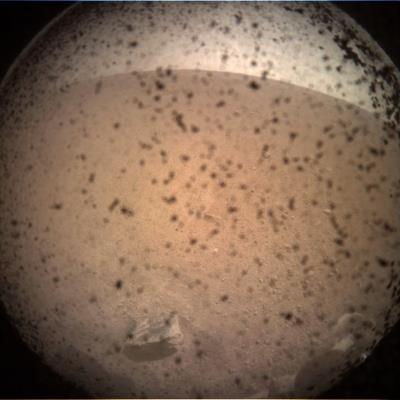
[ad_1]
(MENAFN – IANS)
Washington, November 15 (IANS) Scientists have further decoded the phenomenon that caused Mars to lose the equivalent of a global ocean of water up to hundreds of feet deep in billions of years.
Scientists using an instrument aboard NASA’s Mars Atmosphere and Volatile Evolution (MAVEN) spacecraft have found that water vapor near the surface of the Red Planet is carried higher into the atmosphere than expected.
There, it is easily destroyed by electrically charged gas particles – or ions – and lost to space.
Mars continues to lose water today as vapor is transported to high altitudes after sublimation from the ice caps during warmer seasons, the team wrote in Science magazine.
“We were all surprised to find water that high in the atmosphere,” said Shane W Stone, a PhD student in planetary science at the University of Arizona’s Lunar and Planetary Laboratory in Tucson.
“The measurements we used could only come from MAVEN as it flies through the atmosphere of Mars, high above the planet’s surface.”
To make their discovery, Stone and his team monitored the abundance of water ions high up on Mars for more than two Martian years.
In doing so, they determined that the amount of water vapor near the top of the atmosphere about 150 km above the surface is highest during the summer in the southern hemisphere.
During this time, the planet is closer to the Sun, and therefore warmer, and sandstorms are more likely to occur.
The hot summer temperatures and strong winds associated with dust storms help water vapor reach the higher parts of the atmosphere, where it can be easily broken down into its constituents oxygen and hydrogen.
The hydrogen and oxygen then escape into space. Previously, scientists thought that water vapor was trapped near the Martian surface as on Earth.
“Anything that reaches the top of the atmosphere is destroyed, either on Mars or on Earth,” Stone said, “because that’s the part of the atmosphere that is exposed to the full force of the Sun.”
Researchers measured 20 times more water than usual in two days in June 2018, when a violent global dust storm engulfed Mars (the one that took NASA’s Opportunity rover out of service).
Stone and his colleagues estimated that Mars lost as much water in 45 days during this storm as it typically did during a full Martian year, which lasts two Earth years.
“We have shown that dust storms disrupt the water cycle on Mars and push water molecules higher into the atmosphere, where chemical reactions can release their hydrogen atoms, which are then lost to space,” said Paul Mahaffy, director of the Solar System Exploration Division at NASA Goddard and principal investigator of NGIMS.
Other scientists have also found that Martian dust storms can raise water vapor far above the surface.
But until now no one had realized that the water would reach the top of the atmosphere.
“The peculiarity of this discovery is that it provides us with a new path we didn’t think existed for water to escape the Martian environment,” said Mehdi Benna, Goddard’s planetary scientist and co-investigator of MAVEN’s NGIMS instrument.
“It will fundamentally change our estimates of how fast the water escapes today and how fast it escaped in the past.”
-IANI
above /
MENAFN15112020000231011071ID1101127655
Legal Disclaimer: MENAFN provides the information “as is” without warranties of any kind. We accept no responsibility for the accuracy, content, images, videos, licenses, completeness, legality or reliability of the information contained in this article. If you have any complaints or copyright issues related to this article, kindly contact the supplier above.
.
[ad_2]
Source link